Early-stage physical prototyping.
Tomorrow’s ECG monitoring
This project reimagines long-term ECG monitoring to improve comfort, usability, and dignity for patients in everyday life outside hospital settings. Current systems often cause skin irritation, are visually stigmatizing, and place high demands on patient interaction—factors that can negatively affect both experience and data quality. Through research, prototyping, and collaboration with healthcare professionals and industry partners, the project explores a more inclusive and intuitive solution. The final concept, Coru, is a wireless 3+1 electrode system that uses skin-based data transmission, enabling flexible placement without cables. One electrode also functions as the interaction point, simplifying symptom documentation through an event button and voice guidance. A redesigned silicone patch enhances durability and skin-friendliness, while fall detection and automatic recording help capture events even when the user cannot. By making heart monitoring more accessible and reliable, Coru supports earlier detection of cardiac issues, giving healthcare providers the opportunity to respond before symptoms escalate—ultimately improving patient outcomes.
Project Overview
Coru is a reimagined long-term ECG monitoring system designed to improve early detection of heart conditions while significantly enhancing the patient experience. Long-term ECG monitoring plays a critical role in diagnosing arrhythmias and other irregularities, yet current solutions are often uncomfortable, stigmatizing, and difficult to manage in daily life. Cables get in the way, adhesives irritate the skin, and complex interfaces place a high burden on the patient—often leading to incomplete or poor-quality data.
This project addresses the gap between medical performance and everyday usability. Coru offers a discreet, flexible, and intuitive solution that supports both clinical accuracy and individual well-being. The aim is to improve adherence, capture more reliable data, and contribute to earlier diagnosis and better outcomes—while also considering sustainability and long-term healthcare impact.
Method
The design process combined in-depth research, iterative development, and interdisciplinary collaboration. Interviews were conducted with biomedical analysts at Region Västerbotten, healthcare staff, and experts at Philips Healthcare to gain clinical insights and understand technical constraints. Patients who had used long-term ECG devices shared their experiences, revealing practical issues such as discomfort, cable entanglement, unclear instructions, and the emotional toll of appearing visibly unwell.
To further inform the development, a survey collected broader user feedback, and extended self-testing of current ECG equipment provided firsthand insights into usability, maintenance, and physical wear. These findings were translated into key design challenges and mapped using user journeys and functional analysis.
Early concepts were developed and tested using sketching, cardboard prototypes, and morphological analysis to explore different configurations, materials, and interaction models. Concepts were refined through regular feedback sessions with clinical and industry collaborators, ensuring alignment with user needs and healthcare standards. Sustainability was considered from the beginning—focusing on material selection, product lifespan, waste reduction, and circular design potential.
Outcome
Coru replaces wires with skin-based data transmission, enabling flexible placement of four wireless electrodes without compromising clinical accuracy. Three of these electrodes capture the heart’s electrical activity, while the fourth integrates a tactile event button used for initiating recordings and documenting symptoms via voice input. LED and vibration feedback confirm interaction, helping reduce uncertainty—particularly in stressful moments.
The system’s fall detection and loop memory ensure that data is captured even when the user cannot press the button—addressing a major flaw in current solutions where events are missed due to fainting or confusion. This helps hospitals receive more complete and actionable recordings, especially for users experiencing unpredictable or infrequent symptoms.
The redesigned patch uses a mono-material silicone construction—replacing traditional multi-layer adhesives that often cause irritation. The new patch adheres comfortably through daily routines, reducing the need for frequent replacement and lowering environmental impact. For users who prefer physical connection, a removable string allows the electrodes to be linked without affecting function—offering reassurance without dependency.
By improving ease of use, comfort, and clarity, Coru encourages better compliance and ensures that more meaningful data reaches clinicians. This not only makes the experience better for patients, but also supports earlier detection and treatment of heart conditions—helping healthcare providers intervene before symptoms worsen.
From a sustainability standpoint, Coru reduces material complexity, waste, and unnecessary replacements. The use of skin-based signal transmission also eliminates bulky infrastructure and enables a smaller, more adaptable system. Social sustainability has been central to the process, with the goal of making heart monitoring feel less like a medical burden and more like a part of life—supporting users of different ages, backgrounds, and digital experience levels.
In uniting thoughtful design with medical reliability, Coru offers a more dignified, accessible, and sustainable way to monitor heart health—creating real value for both patients and the healthcare system.
UID25 | Clara Häggström Germann – Grad project presentation
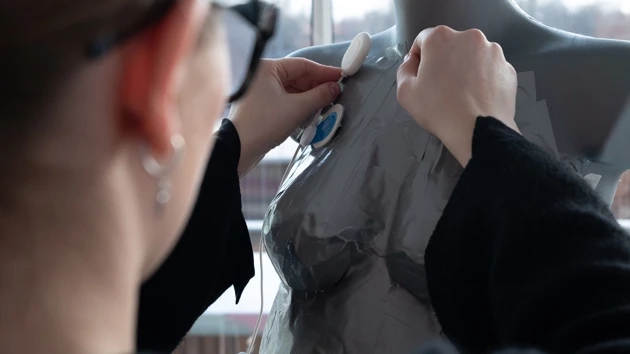

Evaluating concept directions.
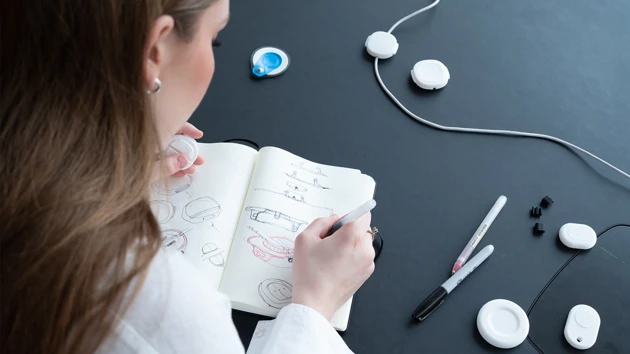
Exploring function and form.
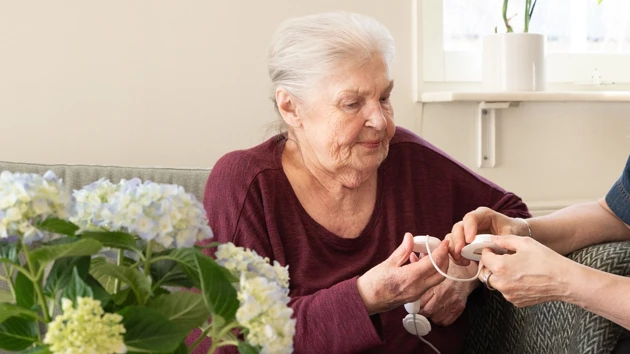
Validating with users.
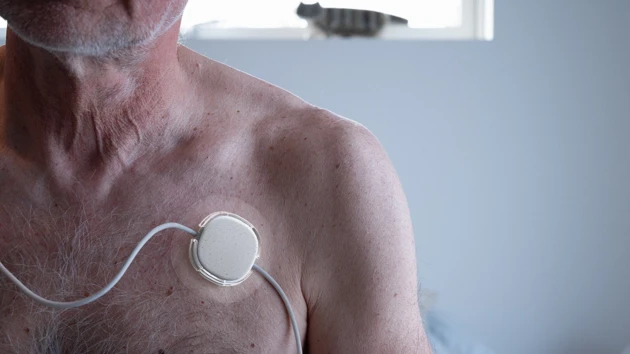
Coru with its supportive fabric strap.
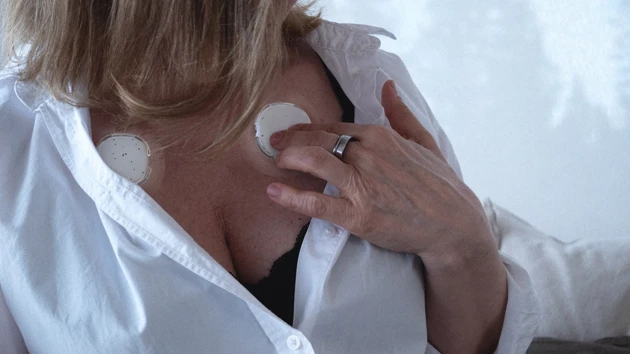
Wireless system transmitting data through the skin.
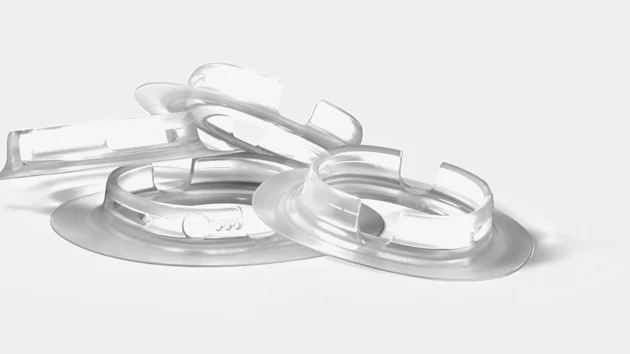
Medical-grade silicone patches.

Electrode setup.










